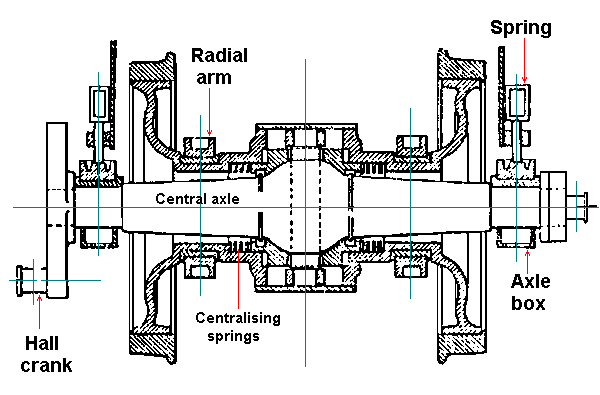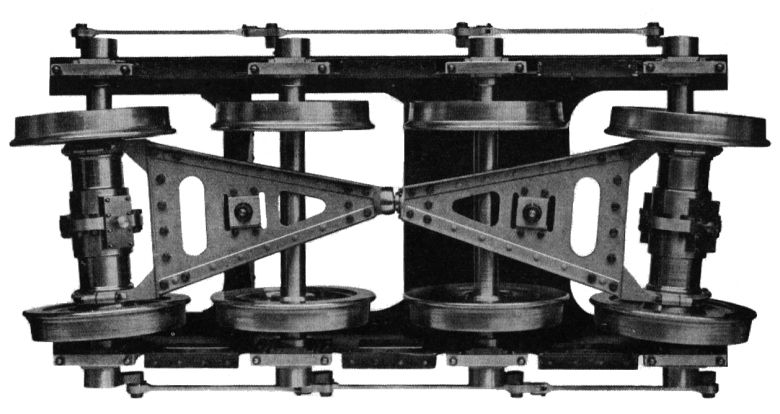Most K-L locomotives were 0-8-0; there are only two fixed axles so this locomotive does not have a rigid wheelbase, and the body of the loco can follow the curves. This would not be the case with three or more fixed axles. Some 0-10-0 KL tank engines were built.

KLIEN-LINDNER EXAMPLES.
The Klien-Lindner system was used in many European states, and unravelling its detailed history would be a lengthy business. Here are a few examples of its use.
1) The K-L system was used on the 0-8-0T brigadelok, the largest locomotive used by the German military railways. (Feldbahn) This compact 10-ton locomotive was introduced in 1905. It was used on the steep sections of the South West Africa Railway, (part of a German colony) where it was very successful in negotiating sharply curved and roughly laid track.
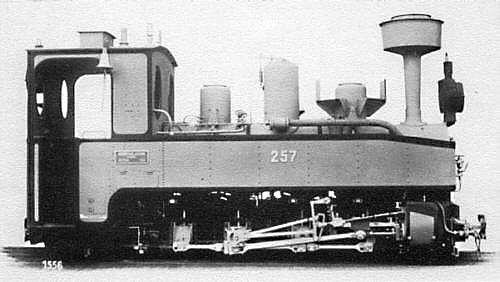 |
| Above: The 0-8-0T brigadelok of the German Feldbahn.
This example was built by Henschel. A tender with extra fuel and water could be used.
By 1918 some 2500 examples had been delivered worldwide, made by fourteen different manufacturers, the major sources being Henschel & Sohn of Cassel, and Orenstein & Koppell.
|
2) In 1909 five Klien-Lindner 0-8-0 tank engines (from a batch of 40 originally built by the Budapest works between 1896 and 1901) were bought for the Czech rail system. One of them (No. 410.002) was only taken out of service in 1954, though whether it still had its KL axles at that date seems unlikely.
3) Two experimental K-L compound 0-6-6-0T locomotives were built by Hartmann in 1916 for the Saxon State Railroad, as the Class XV HTV. They were mainly used on the steep, twisty gradients of the Tharandt/Klingenberg-Colmnitz line. The maximum speed was 44 mph. Their performance proved disappointing, and the K-L axles were troublesome, so they were later confined to the Dresden-Friederichstadt marshalling yard. See picture below.
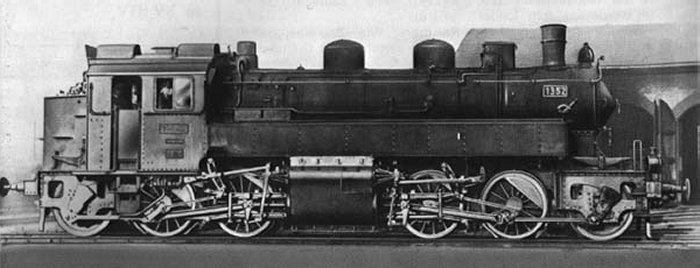 |
| Left: The Series XV HTV compound No 1352: 1916
Two of these were built for the Saxon State Railroad in 1916. There was one HP and one LP cylinder each side, in a common casting, driving separate wheel groups. Note the short outside frames at each end, made necessary by the K-L axles.
The number here is not clear but appears to be 1352.
|
Hartmann built them with works numbers 3843 and 3844, and they were given with road numbers 1351 and 1352. Later the Deutsche Reichsbahn took over both locomotives as DRG 79 001 and 002. Both were retired in 1932.
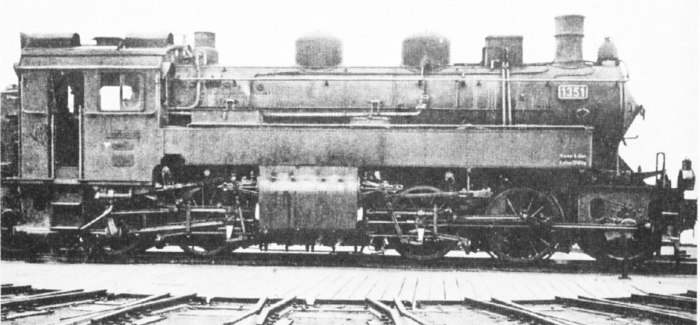 |
| Left: The Series XV HTV compound No 1351: 1916
This is indisputably No 1351.
The design has a Wikipedia page, which gives full technical specs.
|
4) 2-8-0 K-L locomotives were used by the Sardinian Railway Company, a leading Bissel truck having been fitted. No pictures have beenlocated so far.
5) 0-8-0 T37 K-L locomotives were used by the Prussian Staatsbahn in Upper Silesia.
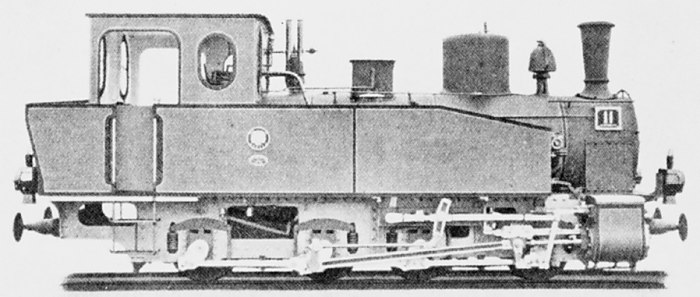 |
| Left: Prussian T37: 1900
Built by Orenstein & Kopplel for the Prussian Staatsbahn.
Constantly increasing weight of trains on narrow gauge railways in Upper Silesia (grabbed by Prussia in 1742) led to this design, with an empty weight of 32 tons, the ability to get round curves with a radius of 35 metres and handle a 200 ton train under difficult conditions.
|





